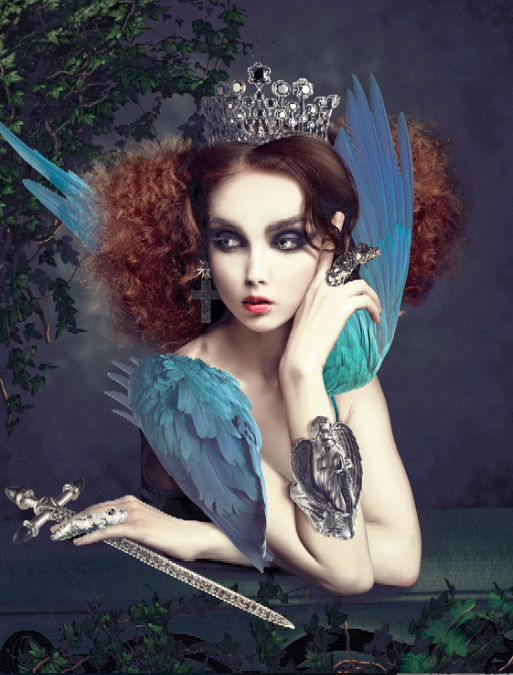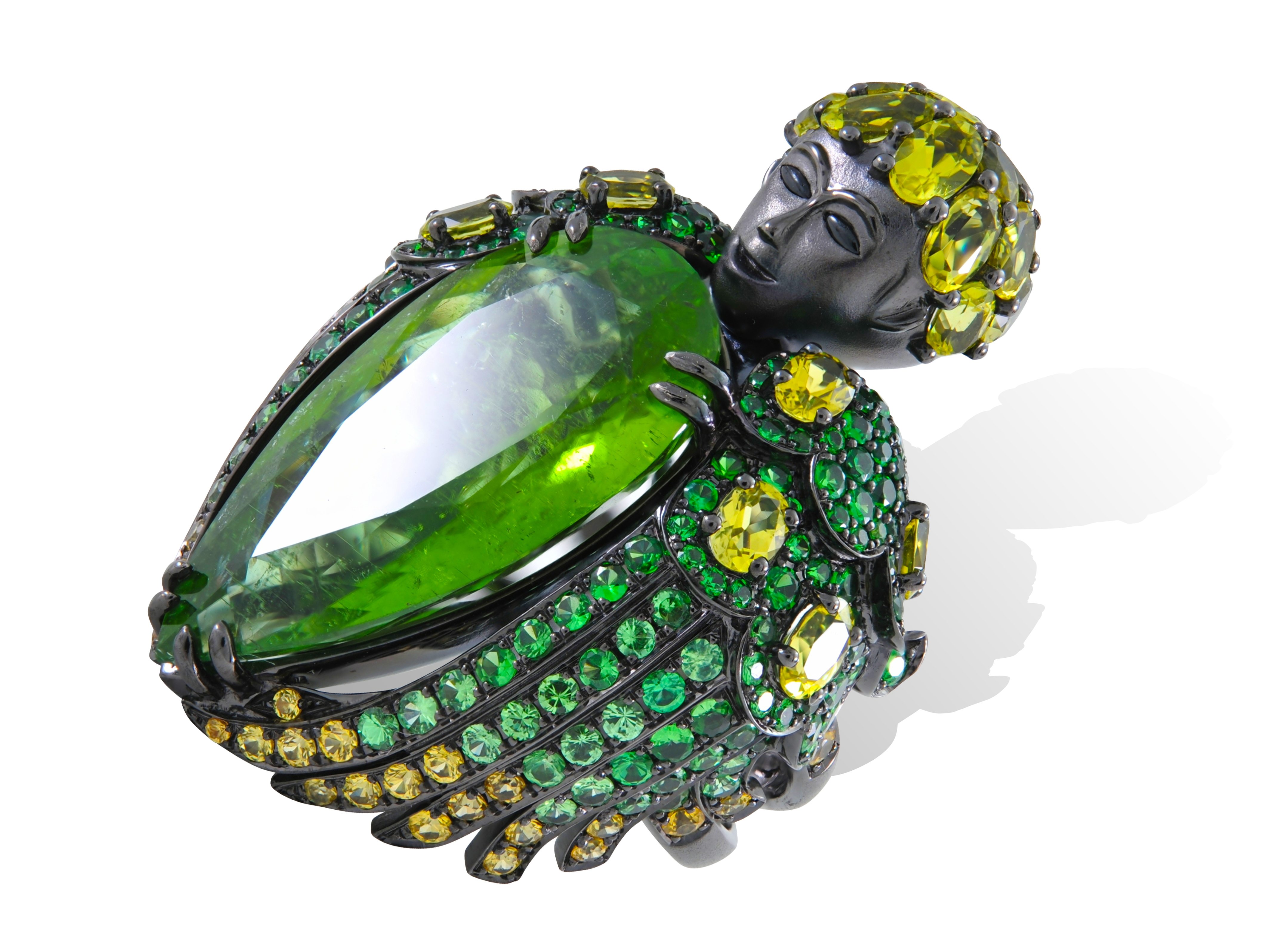A Glorious New Book on Lydia Courteille’s fantastical universe


Even before I met Lydia Courteille in person—I admired her daring, wit and passion for creating provocative jewels, never wavering in her sensibilities—whether it be as a designer or in her ability to choose the rarest of antique pieces. When I finally did meet Lydia, it was seven years after she began designing her own collection in 1996, but she was already legendary in the global antique community. It was exhilarating to interview this woman who designed from the most vivid and fertile part of her imagination and who could intuitively choose exceptional pieces that connoisseurs would want to buy. We talked about how her foray into antiques in 1987 had impacted her own collection and how her instincts led her to deal in the most collectible pieces from the 16th through 20th centuries.

Lydia Courteille’s xochimilcocollection serpent pendant earrings
Over the years, I have seen her and her collections at trade fairs—her fantastical jewels come to life—pieces that juxtapose meanings, experiences, symbols and motifs. She has created her own universe in one collection—each revolving around a theme and story with a beginning, middle and end. From the day she began designing, her imagination seemed to know no bounds.
This journey has been captured in Lydia Courteille Extraordinary Jewellery of Imagination and Dreams by Juliet Weir-de La Rochefoucauld (ACC Artbooks, publication date Nov 2016)

photo @Natalie Schau
Weir-de La Rochefoucauld takes us on a fantastic voyage through Courteille’s life from childhood through present day and reveals how various influences all inspired who Courteille would become and how her life and career would unfold. This beautifully illustrated tome that almost feels as if you are looking at a book of the most extraodinary of fairy tales, is filled with approximately 360 vibrant photos from Courteille’s collections. Also included are photos of her shop and antiques she sold and collected over the years.
“It is important to look at the jewels that Lydia Courteille collected and sold at the beginning of her career as an antique dealer. They were to have a special influence onher first jewellery designs and in many cases they helped to form an awareness of whatwas possible to create. They also helped to shape Courteille’s taste – she knew what shewanted and what she didn’t want to see in her own jewellery designs,” writes Weir-de La Rochefoucauld.

Lydia Courteille’s early ring, circa 2004
Inspired by French cultural landmarks and by historical and literary sources, as well as by mysterious symbols, archaeology, flora and fauna, Courteille’s ingenious and provocative designs are set off by colorful gemstones that meld together to form the magical and unexpected collections she has produced since 1986.
Her shop is two steps from the Place Vendome in rue Saint Honoré.
In the book, Courteille is quoted as saying, “I design for people who have a taste for the extravagant, who have emotion, for people who are confident in their own choices. I love to see a very classical woman come to my shop and buy an eccentric piece. It’s like a code – those who don’t know think that it is a fake; in a way they are testing their friends without overtly showing their wealth.”
- Queen of Sheba collection serpent diadem
- Ostrich Feather and Fan Earrings
- ark angel ring
The shop, writes Weir-de La Rochefoucauld, “is a sophisticated unexpected world of fantasy and rebellious desire; of dreams and castles in the sky. Always in Majorelle and Castaing blue and black, glass vitrines and black wood trellis walls, this is Lydia Courteille’s ‘secret garden’, where gold four-leaf clovers grow alongside her special gardens of rare and unusual gemstones, each transformed into a treasure of colour, light and history to become intriguing works of art to be coveted by those who step over the threshold and into her universe.”

photo @Natalie Schau
She has been fascinated and continually influenced by dramatic and ornate parures of the 18th and 19th centuries, as well as the cabinets of curiosities so popular in the 16th and 17th centuries, which were populated with unusual stuffed animals, birds and insects, shells and unusual objects from antiquity.
Photos and text reveal Courteille’s own curiosity cabinet, which holds a collection of large shells, red coral branches, pieces of amber, lava and turquoise, four-leaf clovers, exotic humming birds, light-winged butterflies and dragonflies and other oddities brought back from travels abroad.

from Curiosity Cabinet chapter in the book
The book also recalls how one of the most important jewelry designers to be collected by Lydia Courteille is Suzanne Belperron. Courteille first began to collect her pieces before the great auction of the Duchess of Windsor’s jewels held at Sotheby’s Geneva in April 1987. Courteille was attracted by the originality of Belperron’s work and many of Belperron’s most interesting pieces have passed through Courteille’s hands.

Amazonia collection flower ring
We learn that Courteille is not merely one of the most sought after antique dealers and inventive designers of our time, but also a scientist, collector and gemologist who has curated collections for clients and created more than 30 of her own collections to date. This book is one for your jewelry library—as Lydia Courteille is one of the most influential women in jewelry of our time.
- processional menorah earrings
- ba ear pendants, circa 2006









